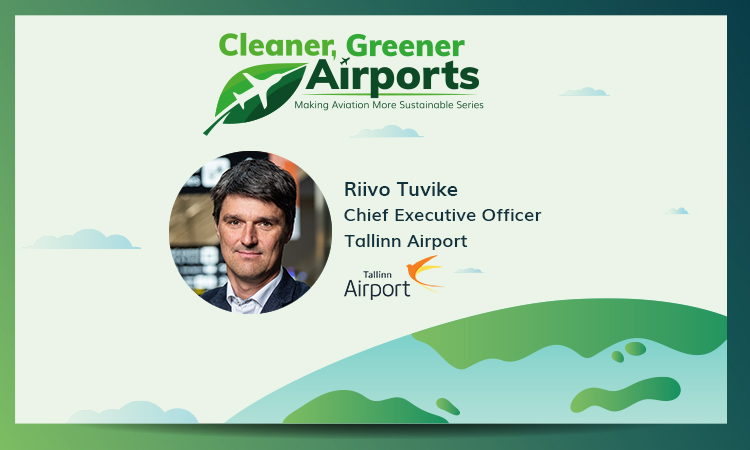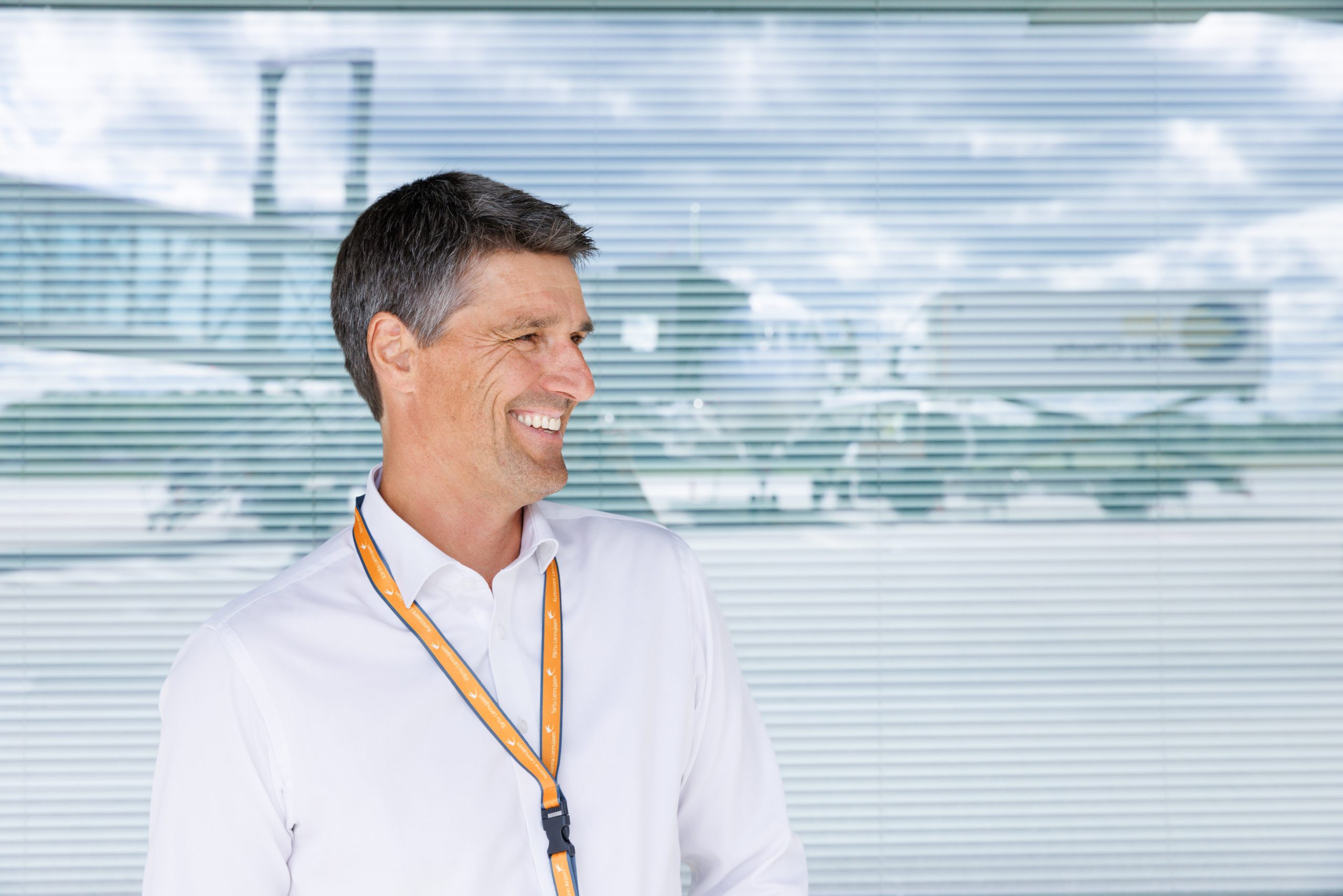How is Tallinn Airport aiming to be net zero by 2030?
- Like
- Digg
- Del
- Tumblr
- VKontakte
- Buffer
- Love This
- Odnoklassniki
- Meneame
- Blogger
- Amazon
- Yahoo Mail
- Gmail
- AOL
- Newsvine
- HackerNews
- Evernote
- MySpace
- Mail.ru
- Viadeo
- Line
- Comments
- Yummly
- SMS
- Viber
- Telegram
- Subscribe
- Skype
- Facebook Messenger
- Kakao
- LiveJournal
- Yammer
- Edgar
- Fintel
- Mix
- Instapaper
- Copy Link
Posted: 19 July 2023 | Riivo Tuvike | No comments yet
Riivo Tuvike, CEO at Tallinn Airport, is back writing for IAR’s Cleaner, Greener Airports Series and details the work going into achieving the airport’s aims to be carbon neutral by 2025 and to become a net zero hub of air travel by 2030.


Tallinn Airport will never be the biggest airport in the world, but it is the world’s cosiest, and people have a lot of love for it. It is, after all, just 5km from the city centre (a rarity for a capital city), bordered by forest and on the shores of Lake Ülemiste. This certainly makes for pretty landings, and it gives arriving passengers a true sense of what Estonia’s like. But at the same time, it presents a major challenge, since the impact of our operations is felt, and is visible, immediately over the fence line.
Tallinn Airport has invested almost €80 million in sustainability since 2012. This has resulted in a significant reduction in our carbon footprint – 25% between 2018 and 2022 alone. Achieving these sorts of transformations is never easy, but with determination to mitigate environmental impact and set an example to others, it can be done.
How did Tallinn Airport bring about such a substantial reduction in its CO2 emissions?
We pinpointed our biggest sources of carbon emissions and set about lessening them. Green issues have been in greater focus at the airport over the last two or three years, in which time we’ve made several initiatives and achieved our most significant reductions.
As for the sources of emissions and how much we’ve been able to limit them, the fact that we operate 24/7, like so many airports around the world, means our buildings and runway have to be constantly lit and our facilities heated and fully functional. As such, electricity, heating and our fleet of vehicles account for the majority of our CO2 emissions.
Tallinn Airport has invested almost €80 million in sustainability since 2012. This has resulted in a significant reduction in our carbon footprint – 25% between 2018 and 2022 alone.
To reduce emissions (and costs) from the use of electricity, we started constructing solar farms in our airports all over Estonia in 2020. This meant we also started using green energy, which has helped us cut emissions in 2022 from electricity by 11% compared to 2019. A total of 15 solar farms around the country, with total peak power capacity of 6.5MW, now power our airports. Last year we covered 14% of our electricity needs from our solar farms, while this year we predict that the farms will generate up to 40% of the energy we require. In May alone, parks produced 54% of our electricity consumption. In sunny weather, the farms at our regional airports produce more electricity than the facilities there can use. In addition to reducing carbon emissions, the solar farms have helped us cut costs and make gainful use of land that would otherwise have stood empty.
To take further steps forward from here, we’ve decided to buy in and use only renewables-based electricity from 01 January 2024. This means that by next year our carbon emissions from electricity will have been reduced to a minimum.


CEO of Tallinn Airport, Riivo Tuvike
Our airport may be small, but it still covers a lot of ground, and inevitably we have to use vehicles to get around. Here, too, we have to take a smart approach. Estonia’s situated in a climate with four distinct seasons. This means we get both sleet and snow, as well as heatwaves and dry spells. Such varying conditions are a challenge for the technology we use and for us in trying to make it all as green as possible. Our view is that ‘green’ doesn’t necessarily mean ‘new’ – rather that you have to be inventive in maximising your efforts to make your existing equipment more sustainable and replacing it gradually, making smart choices along the way.
Make what you’re already using greener!
It’s important to us to get the most out of the technology we use, not just to replace something so that it would run on electricity. After a successful test period, we stopped buying in diesel made from fossil fuels in June, and by the end of the year at the latest we’ll be solely using Neste MY paraffin fuel produced from renewable sources within the airport boundaries.
We’re delighted to announce that Tallinn Airport will be carbon neutral by 2025 and a net zero hub of air travel by 2030.
This new fuel will have to be used by all of the airport vehicles that operate outside of the airport grounds as well, starting from next year. This will help us reduce our annual carbon emissions from fuel by 90% or more, which is to say by 1,200 tonnes in total, or 3.3 tonnes of CO2 per day.
We’ll also be using this sustainable fuel in our generators.
In everything new we buy, we go for the greenest options
Wherever possible, we’ve already adopted or will shortly be adopting green technology. For example, at the start of the year we introduced electric cars for our ground staff to use for servicing aircrafts. These replaced the small cars we previously used, which consumed around 2,500 litres of fuel per car per year. This has reduced our annual carbon emissions into the air by more than 17,000kg. Also zooming through airport grounds now are electric scooters, which have been a big hit among staff and passengers alike. They’re helping to limit our use of four-wheeled vehicles, further reducing our CO2 emissions. Quite a few passengers have posted photos and videos of our workers zipping around on scooters on social media, adding that it’s something you’ll only see at the world’s cosiest airport. We also use green tech in servicing aircraft, whether it’s battery-powered ground power units (GPUs) or electric push-back.
To promote and simplify the electrification of technology, we’ve started building a charging network at the airport, with the charging points for the use of both staff and passengers. We’ve set ourselves the goal of there being no airport vehicles running on fossil fuels by January 2028.
The total area of the buildings at the airport is 93,563m², and it unavoidably takes a lot of energy to heat them all. But keeping rooms warm doesn’t have to come at the cost of the environment. Up until November last year we used gas to heat our buildings, but the geopolitical situation and our wish to reduce the impact of our operations on nature drove us to look for more sustainable and dependable solutions. As such, we decided to switch from gas to district heating – two thirds of which is produced from renewable sources, including wood chippings. This transition will help us reduce our CO2 footprint from heating by almost 20%. To amplify the positive impact of district heating, our end goal is for the heating energy we use to be entirely generated from renewables. We’ll never eliminate the environmental impact of heating altogether, but it’s important to us to minimise it.
A net zero airport by 2030
Looking after the environment and operating sustainably have become integral parts of our everyday activities, and the realisation that we need to act now has forced us to reassess our actions and objectives. In early summer we cast a critical eye over our goals, making changes to them which now see us aiming to achieve a net zero airport five years earlier than originally planned. We’re delighted to announce that Tallinn Airport will be carbon neutral by 2025 and a net zero hub of air travel by 2030.
This will take a lot of work and smart decisions on our part and require the cooperation and involvement of our employees and partners. Our goal is to get our partners involved in both the planning and implementation phases, to which end we’ve already started mapping out our Scope 3 partners – the airport and its partners form a whole, and every member of staff and every company we work with shares our principles and values. It’s important that everyone at the airport, staff and passengers alike, does what they can to mitigate their own personal impact on the environment. For this it’s important that we raise awareness, too, which is why we’ve already established a platform we call ‘Green Mornings’ to share knowledge and best practice with our partners and to work with them to map out the areas in which the airport and they themselves can take steps for the benefit of the environment.
We get our partners involved from the very beginning of the procurement process – we consider it important that the products we’re supplied with and the services we’re offered have as limited of an impact on nature as possible. That’s why we are implementing environmental requirements as an inseparable part of procurements.
Tallinn Airport has repeatedly been named one of the best airports in the world not only for being so cosy and so quick to get around, but also for offering such good service. However, clients’ expectations are changing, with sustainability becoming increasingly important to them. If we want to remain competitive, continue to develop and maintain our reputation as an attractive employer with a worthy mission, we too must change – and that’s exactly what the airport is doing. These changes start in each and every one of our staff and passengers, the role of the airport being to offer them the kind of knowledge and infrastructure that supports the green transition.
Tallinn Airport’s goal is to ensure the sustainable and responsible operation of the airports belonging to the group and the provision of high-quality services, while preserving the natural environment and reducing emissions.


Related topics
Cleaner, Greener Airports: Making Aviation More Sustainable Series, Emissions, Social responsibility, Sustainability


















